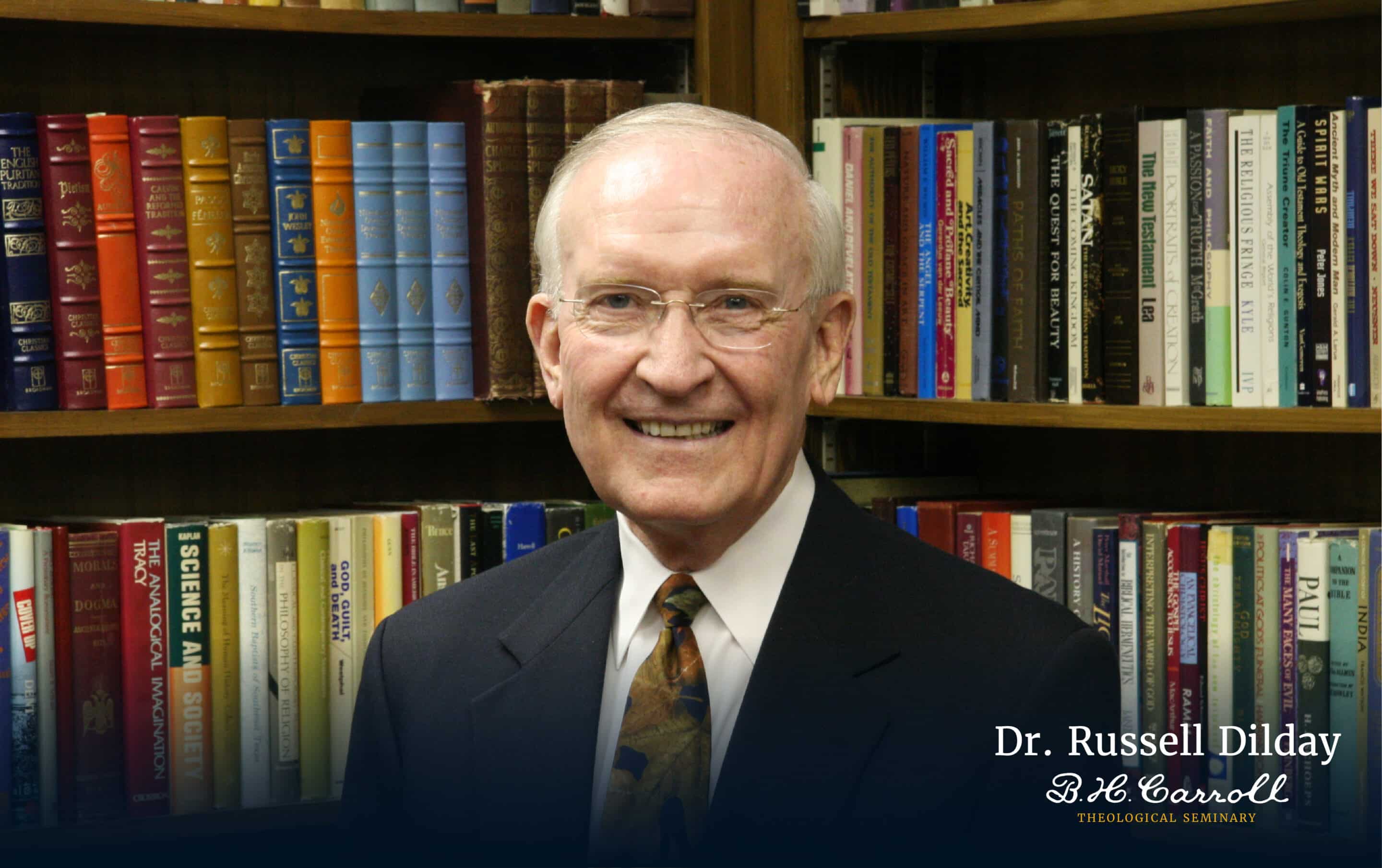
IRVING, Texas (June 22, 2023)—B. H. Carroll Theological Seminary was one of several institutions in Baptist life to benefit from the wisdom and faith of Dr. Russell Dilday, B. H. Carroll President Dr. Gene Wilkes said following the announcement of Dilday’s death June 21.
Dilday, who was 92 at his passing, was ousted from the presidency of Southwestern Baptist Theological Seminary in 1994 following the fundamentalist takeover of the seminary’s board. That singular event led to a significant rift in Baptist life both in Texas and nationally. But it also created an opportunity for Dilday to pour his energy into strengthening and establishing other Baptist seminaries and universities, including George W. Truett Theological Seminary at Baylor University, Howard Payne University—where he served as interim president—and B. H. Carroll.
Dilday served as B. H. Carroll’s first chair of the Board of Governors and later as its first chancellor, accompanying Drs. Bruce Corley, Jim Spivey, Budd Smith, and Stan Moore in founding the independent seminary. He served in the role until his retirement but continued to help the seminary raise funds. Wilkes said Dilday’s experience in institutional leadership was extremely valuable to him.
“When I became President of B. H. Carroll Theological Seminary, I had never held an academic administrative position,” Wilkes said. “Dr. Dilday, our chancellor at the time, encouraged me often and was available to me whenever I needed his opinion or counsel. He connected us to donors and supporters who supported the seminary simply because of his recommendation. He spoke well and often of the seminary’s founders and their vision for theological education.”
B. H. Carroll’s history ironically began shortly before Dilday’s firing from Southwestern. In October 1993, Dr. Bruce Corley presented a paper to the joint faculties of Southwestern Seminary and Baylor University. The paper raised questions about how the introduction of technology and changes to the church and society could affect the then existing model of theological education. The conclusion of the paper indicated seminaries would be presented with two choices—adapt or face the possibility and decline and irrelevance. Soon after, the Committee on Theological Education in the 21st Century was formed at Southwestern Seminary.
“Dr. Dilday was behind the work of the committee at Southwestern on revamping theological education for the future, but our work was truncated by his firing,” Corley said.
Two years later, Dr. Corley and several others proposed to the Theological Education Committee of the Baptist General Convention of Texas a method for establishing and operating “new-venture schools” for the training of church ministers. And in July 1997, the committee at Southwestern established guidelines for core competencies, clusters of learning, and the concept of “teaching churches”—churches which would host courses for both seminary students and lay persons. This model capitalized on the idea of “returning theological education to the local church” where it had been long before seminaries were invented.
Ironically, in 1999, the Association of Theological Schools also dedicated a full volume of its journal Theological Education to what it then called “Distance Education” or “Distance Learning.” Embedded in the editors’ introduction of the report was a telling remark.
As the organization raced to maintain pace with and even anticipate a bolder and broader vision of theological education in the future, they wrote, “Changes in the ATS student body (older and less mobile than earlier generations of ATS students), changes in North American higher education that encourage greater access, and changes in the technology available to support classroom extension education (such as interactive video instruction) and distance learning (web-based courseware and the availability of digital data and information) quickly make these standards outdated.”
These trends (aging and less mobile students, changes to classroom technology, and the expansion of the Internet) were catalysts which motivated Corley, Spivey, Smith, and Moore.
Theological education, they believed, can and should belong to the church. From 2002-2003, Corley, Spivey, Smith and Moore began to study the feasibility of forming a school which could provide ease of access to theological education and increase the number of church members to whom theological education was available. B. H. Carroll, founded in 2004, was the result. Dilday joined in, believing the seminary’s model would succeed.
“Russell was a key figure in the beginning of Carroll. He made the first public announcement about the formation of the school to the media gathered in Dallas,” Corley said. “He enthusiastically offered his support and guidance for 15 years, as the first chair of our Board of Governors and then as chancellor.”
Corley said Dilday also made invaluable contributions to the funding and accreditation of B. H. Carroll. He also exemplified what it meant to be a “Christian gentleman.”
“He was never without a smile or a word of encouragement,” Corley said. “We knew him best as a beloved friend.”
“Dr. Dilday stood with us in the early days when so many said such a seminary was not possible. We all need heroes to inspire us to become what we potentially can be. He was one of those heroes in my life who was both an example of gracious servant leadership and someone who encouraged me to become the leader I had not been before,” Wilkes added.